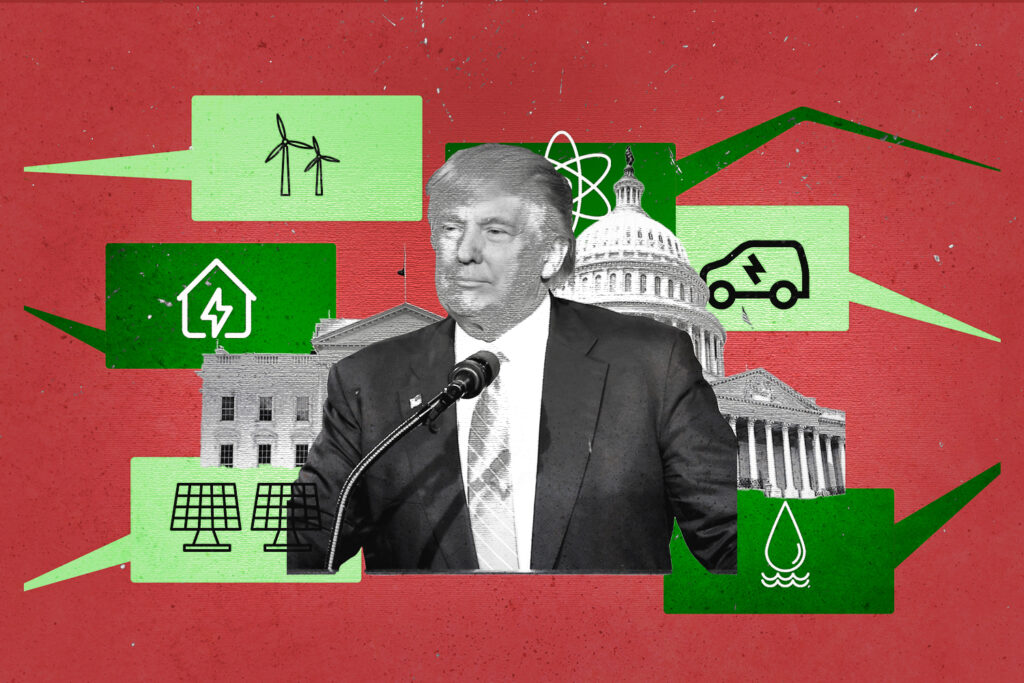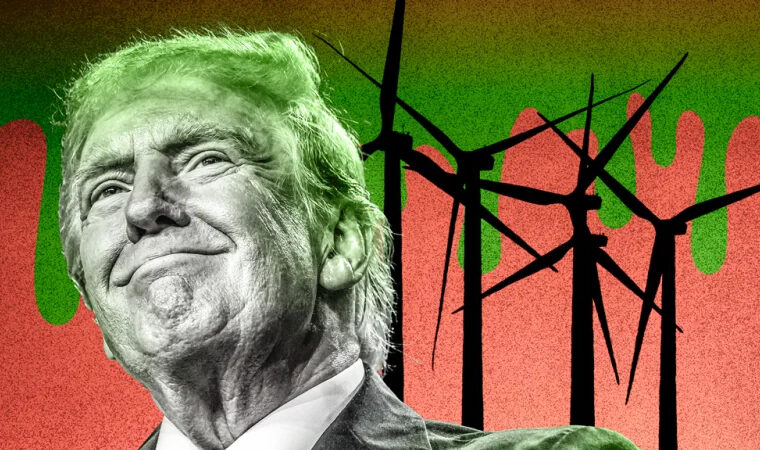President Donald Trump’s latest budget request proposes significant cuts to renewable energy programs and climate-related spending, signaling a clear shift towards prioritizing fossil fuels and downplaying the urgency of addressing climate change. The administration aims to redirect U.S. energy production, moving away from initiatives designed to reduce carbon dioxide emissions.
The budget proposes slashing $21 billion in unspent funds from the 2021 bipartisan infrastructure law, which were earmarked for renewable energy projects, electric vehicle (EV) charging infrastructure, and other efforts to mitigate climate change. Additionally, it targets climate research spending and initiatives aimed at promoting diversity.
According to a White House fact sheet on climate and environment spending, “President Trump is committed to eliminating funding for the globalist climate agenda while unleashing American energy production.” The budget “eliminates funding for the Green New Scam,” reflecting the administration’s dismissive stance towards comprehensive climate action plans.
It’s crucial to remember that the president’s budget request is essentially a wish list presented to Congress, which ultimately controls federal spending. While Republicans control both chambers of Congress and have generally aligned with Trump’s policies, the budget is best viewed as a starting point for negotiations and a representation of the administration’s priorities.
However, a White House official indicated that the Trump administration is exploring ways to exert greater control over federal spending, potentially including refusing to spend funds appropriated by lawmakers. This approach could lead to significant clashes with Congress over budgetary authority.
The first budget request of Trump’s second term calls for a $163 billion cut to non-defense accounts, bringing them down to $557 billion, while keeping defense funding steady at $893 billion. The proposal has drawn criticism for its focus on culture-war talking points, even from groups that don’t always support environmental and climate spending.
Steve Ellis, president of the nonpartisan budget watchdog Taxpayers for Common Sense, criticized the request as “long on rhetoric and short on details.” He added, “This year’s version leans heavily on political talking points—taking aim at so-called ‘woke’ programs and the ‘Green New Scam,’ while proposing a massive Pentagon spending hike to pay for wasteful fantasies and diverting military resources to immigration enforcement missions.”
The administration’s proposal seeks to reverse much of the funding championed by Trump’s predecessor, Democrat Joe Biden, for renewable energy. It would cancel over $15 billion from the 2021 infrastructure law “purposed for unreliable renewable energy, removing carbon dioxide from the air, and other costly technologies that burden ratepayers and consumers,” according to the White House fact sheet.
Additionally, the budget aims to eliminate $6 billion allocated for building electric vehicle charging infrastructure, arguing that “EV chargers should be built just like gas stations: with private sector resources disciplined by market forces.”
The budget also proposes decreasing spending on the Energy Department’s Energy Efficiency and Renewable Energy program by $2.5 billion. This program supports private-sector projects with financing and conducts research on low-carbon energy sources.
Rep. Marcy Kaptur, the ranking Democrat on the House Appropriations subcommittee that oversees energy programs, condemned the cuts to renewable energy initiatives. She warned that these cuts would increase energy prices for consumers and undermine a growing domestic industry. “The Trump Administration’s proposal to slash $20 Billion from the Department of Energy’s programs — particularly a devastating 74% cut to Energy Efficiency and Renewable Energy — is shortsighted and dangerous,” Kaptur stated.
Throughout the budget request, the administration targets programs that it deems out of line with Trump’s ideology on social issues, including those designed to promote diversity. This includes spending on environmental justice initiatives, which address pollution and climate effects in minority and low-income communities, and organizations “that advance the radical climate agenda,” according to the fact sheet.

Research and grant funding for the National Oceanic and Atmospheric Administration (NOAA) would be significantly impacted by the proposal, which seeks to terminate “a variety of climate-dominated research programs that are not aligned with Administration policy of ending ‘Green New Deal’ initiatives, saving taxpayers $1.3 billion.”
The budget also proposes cutting $900 million from National Park Service (NPS) operations, which the administration says would come from defunding smaller sites while “supporting many national treasures.” The administration suggests transferring responsibility for smaller sites currently managed by the NPS to states, allowing the federal government to focus on major parks that attract national and international tourists.
Despite recent laws aimed at boosting maintenance spending at parks, the National Park Service faces a $23.3 billion deferred maintenance backlog, according to a July 2024 report from the Congressional Research Service.
The proposed budget cuts reflect a clear shift in priorities, with the Trump administration aiming to reduce federal support for renewable energy and climate initiatives while emphasizing fossil fuel production. These proposed changes are likely to face significant scrutiny and debate in Congress, as lawmakers grapple with balancing competing interests and addressing the nation’s energy and environmental challenges.



